2025 Cisco 300-420 dumps exam questions
Share the latest information youeed to know for the Cisco 300-420 exam and provide the latest dumps exam questions and answers

300-420 ENSLD Overview
Designing Cisco Enterprise Networks (300-420 ENSLD) v1.1 is a 90-minute exam that certifies a candidate's knowledge of enterprise design, including advanced addressing and routing solutions, advanced enterprise campus networks, Wide-Area Network (WAN), security services, network services, and Software-Defined Access (SDA).
300-420 ENSLD v1.1 Exam Topics
The following topics are general guidelines for the content likely to be included on the exam. However, other related topics may also appear on any specific delivery of the exam. To better reflect the contents of the exam and for clarity purposes, the guidelines below may change at any time without notice.
Download Complete List of Topics in PDF format
Advanced Addressing and Routing Solutions | 25%
Advanced Enterprise Campus Networks | 25%
WAN for Enterprise Networks | 20%
Network Services | 20%
Automation | 10%
2025 Cisco 300-420 dumps exam questions online share
Question 1:
An engineer must design a management network that enables SSH, NTP, FTP, and SNMP over the production network. The design requires the management of routers and switches that exist across different networks. Which feature must the design include?
A. Management Plane Protection
B. dedicated management console connection per device
C. terminal server
D. dedicated management VRF connection per device
Correct Answer: D
Question 2:
A company is planning to open two new branches and allocate the 2a01:c30:16:7009::3800/118 IPv6 network for the region. Each branch should have the capacity to accommodate a maximum of 200 hosts. Which two networks should the company use? (Choose two.)
A. 2a01:0c30:0016:7009::3a00/120
B. 2a01:0c30:0016:7009::3b00/121
C. 2a01:0c30:0016:7009::3a80/121
D. 2a01:0c30:0016:7009::3c00/120
E. 2a01:0c30:0016:7009::3b00/120
Correct Answer: AE
Question 3:
Which two steps can be taken to improve convergence in an OSPF network? (Choose two.)
A. Use Bidirectional Forwarding Detection
B. Merge all the areas into one backbone area
C. Tune OSPF parameters
D. Make all non-backbone areas stub areas
E. Span the same IP network across multiple areas.
Correct Answer: AC
Question 4:
Refer to the exhibit.
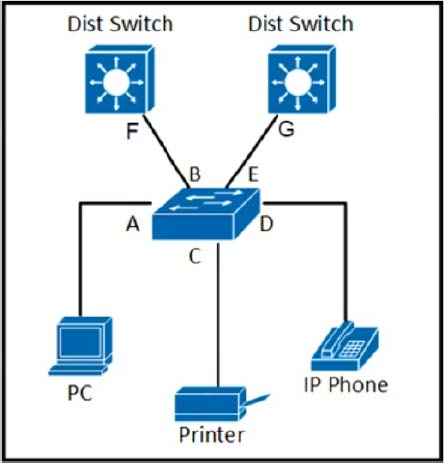
Which two points in the network must an engineer configure the ports for explicit trust when using a DiffServ model?
A. B and E
B. F and G
C. A and D
D. C and D
Correct Answer: B
Question 5:
DRAG DROP
Drag and drop the characteristics from the left onto the Yang model they describe on the right.
Select and Place:
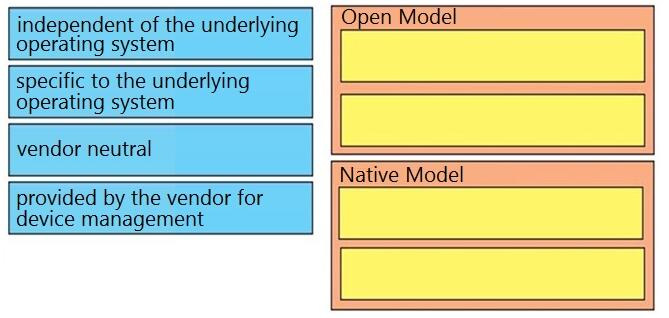
Correct Answer:
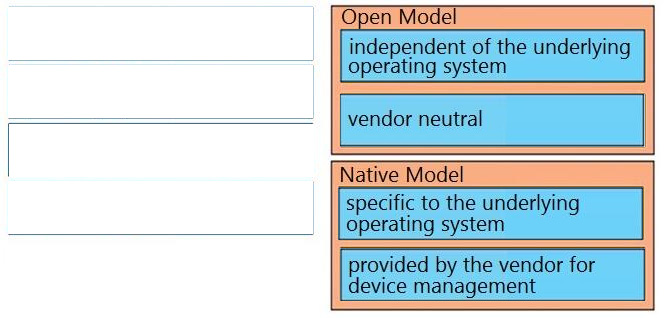
Question 6:
What is the purpose of an edge node in an SD-Access network fabric?
A. Edge nodes identify and authenticate endpoints and register endpoint information with control plane nodes.
B. Edge nodes track endpoint IDs to location mappings, along with IPv4, IPv6, or MAC addresses.
C. Edge nodes are the gateway between the fabric domain and network outside of the fabric.
D. Edge nodes resolve lookup requests from edge and border nodes to locate destination endpoint IDs.
Correct Answer: A
Question 7:
Refer to the exhibit.
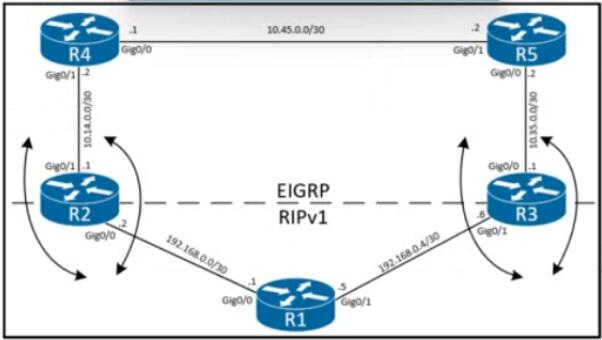
An engineer Is designing a redistribution solution for a customer. The customer recently acquired another company and decided to integrate the new network running RlPv1 with the company\'s existing network. Which redistribution technique must the engineer select to ensure the multipoint two-way redistribution does not cause routing loops?
A. distribute-lists inbound under the EIGRP process denying RIPv1 learned prefixes
B. distribute-lists outbound under the EIGRP process denying RIPv1 learned prefixes
C. distribute-lists outbound under the RIPv1 process denying EIGRP learned prefixes
D. distribute-lists inbound under the RIPv1 process denying EIGRP learned prefixes
Correct Answer: A
Question 8:
Which Cisco vEdge router offers 20 Gb of encrypted throughput?
A. Cisco vEdge 2000
B. Cisco vEdge 100
C. Cisco vEdge 5000
D. Cisco vEdge 1000
Correct Answer: C
Question 9:
Which feature is required for graceful restart to recover from a processor failure?
A. Cisco Express Forwarding
B. Virtual Switch System
C. Stateful Switchover
D. Bidirectional Forwarding Detection
Correct Answer: C
https://archive.nanog.org/meetings/nanog42/presentations/Weissner_SSO.pdf
The Stateful Switchover (SSO) feature works with Nonstop Forwarding (NSF) in Cisco software to minimize the amount of time a network is unavailable to its users following a switchover. The primary objective of SSO is to improve the availability of networks constructed with Cisco routers.
Question 10:
A company must automate a set of complex changes aligned with DR testing in the network. These changes are specific, and the DR playbook will be adjusted in the future. The playbook has diverse routing and switching assets in scope as well as multiple vendor and hardware platforms. A developer will create a thin, web front-end microservice and integrate with an Open daylight controller to push changes to the network. Which YANG model should be used?
A. Use a single native vendor YANG model to minimize development time
B. Use an open YANG model to allow the reuse of code and standardize the implementation across platforms
C. Use multiple native vendor YANG models to provide code consistency.
D. Develop an individualized YANG model to minimize development resources and time to market.
Correct Answer: B
Question 11:
What is a benefit of using VRRPv3 as compared to VRRPv2?
A. VRRPv3 supports IPv4 and IPv6
B. VRRPv3 supports authentication
C. VRRPv3 supports preemption
D. VRRPv3 supports stateful switchover
Correct Answer: A
Question 12:
Refer to the exhibit. An architect must design a solution to connect the two ASs. To optimize bandwidth, the design will implement load sharing between router R6 and router R1. Which solution should the design include?
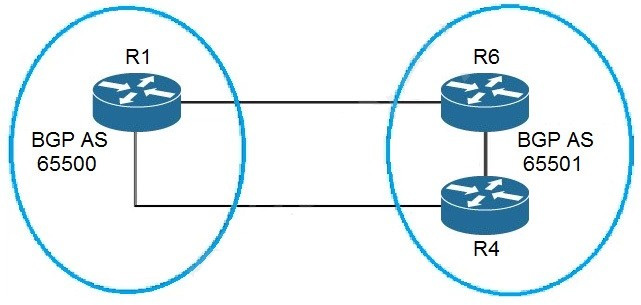
A. Use update-source to specify the Loopback interface.
B. Use next-hop-self attributes only for routes that are learned from eBGP peers.
C. Configure the eBGP TTL to support eBGP multihop.
D. Use maximum-paths to install multiple paths in the routing table.
Correct Answer: D n
Question 13:
An engineer is designing a PIM Anycast RP solution between two data centers. The design must ensure that RP1 in DC1 and RP2 in DC2 inform each other about specific sources that have joined locally. Which solution must the engineer choose?
A. Provision the RPs on the same IP subnet and extend the subnet at Layer 2 between data centers
B. Enable MSDP between RPs using separate unique loopback interfaces
C. Enable MSDP between RPs using the configured Anycast RP address
D. No action is required because PIM registers from the source will, by default, reach each RP
Correct Answer: B
Explanation: In Anycast RP, two or more RPs are configured with the same IP address on loopback interfaces. The Anycast RP loopback address should be configured with a 32-bit mask, making it a host address. All the downstream routers
should be configured to "know" that the Anycast RP loopback address is the IP address of their local RP. IP routing automatically will select the topologically closest RP for each source and receiver.
MSDP used for Anycast RP is an intradomain feature that provides redundancy and load- sharing capabilities. Enterprise customers typically use Anycast RP for configuring a Protocol Independent Multicast sparse mode (PIM-SM) network to
meet fault tolerance requirements within a single multicast domain.
https://www.cisco.com/c/en/us/td/docs/ios/solutions_docs/ip_multicast/White_papers/anyca st.html#wp1029118
https://www.cisco.com/c/en/us/support/docs/ip/ip-multicast/115011-anycast-pim.html " You need to have a loopback on each prospective RP router, which is different than the loopback that is being used as the RP address."
Question 14:
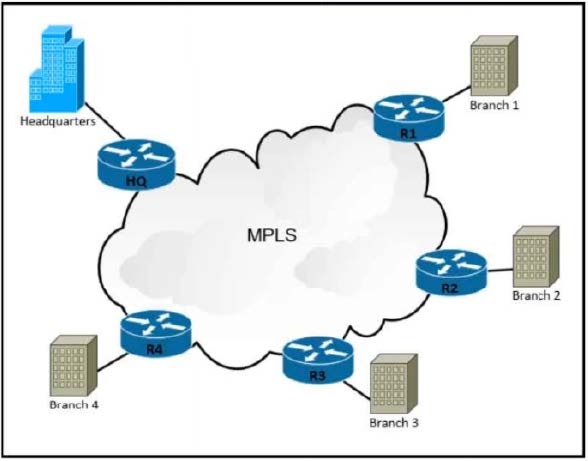
Refer to the exhibit. Currently the network uses a single-homed solution for connecting to the internet. An engineer must design a more resilient WAN using the internet circuits at each site. The design must provide failover connectivity, support load-sharing of traffic, and QoS. Which solution must the engineer choose?
A. IPsec tunnels
B. Get VPN
C. SD-WAN
D. DMVPN
Correct Answer: C
Question 15:
DRAG DROP
Drag and drop the elements from the left onto the YANG models where they and used on the right.
Select and Place:
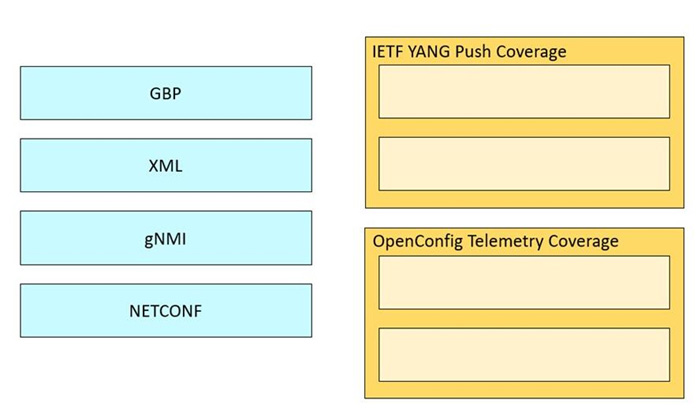
Correct Answer:
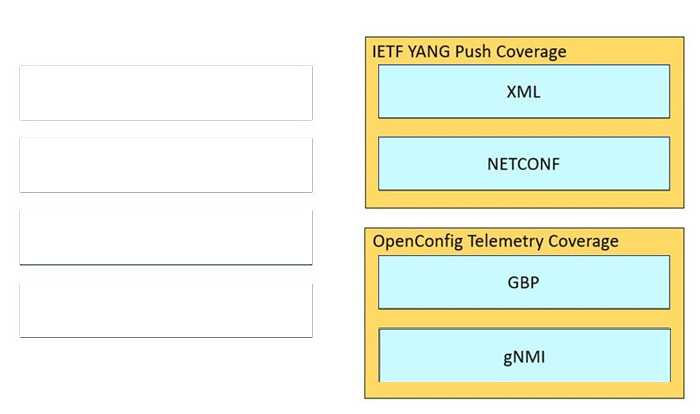
…
Finally I want to tell you:
The Leads4pass 300-420 dumps exam material contains 342 latest exam questions and answers. Use https://www.leads4pass.com/300-420.html to download the complete material to help candidates successfully pass the Designing Cisco Enterprise Networks (ENSLD) exam.
 Knowt
Knowt
